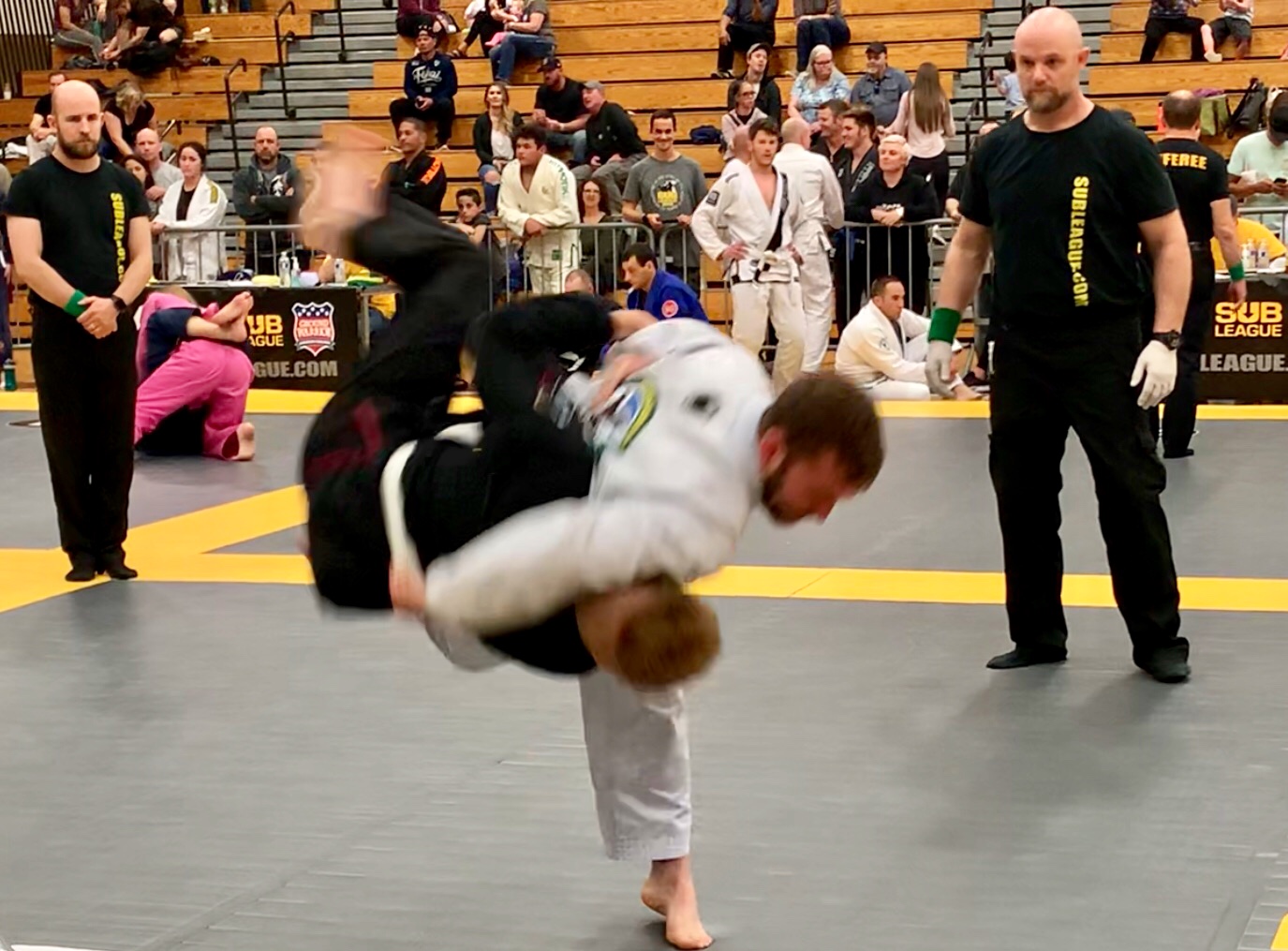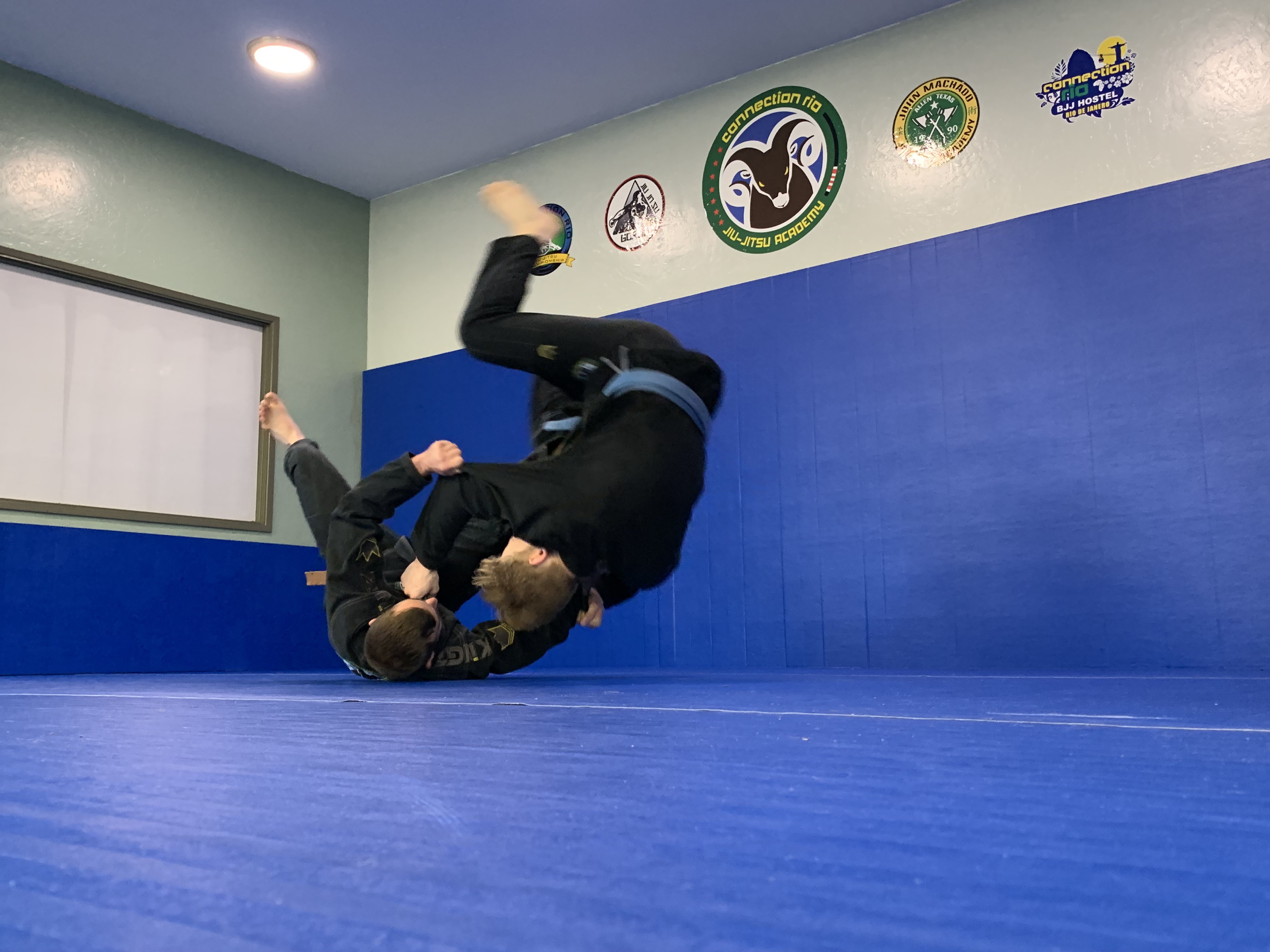
3 Reasons You NEED to Practice Throws and Takedowns in Your Jiu-Jitsu
At Connection Rio Jiu-Jitsu in Bend, we understand that throws and takedowns are a crucial part of training. That’s why, we begin nearly every class with entries and takedowns. In addition CRA also offers Judo classes during the week to focus solely on our stand-up. We understand that many academies don’t practice stand-up game out of fear, lack of knowledge or safety concerns, but the risk of injury from throws or takedowns is no higher than that of armbars and other joint locks. In fact, neglecting stand-up game during training can actually put the athlete at risk of injury in other scenarios. Here are three reasons throws and takedowns are a crucial part of a well-rounded BJJ training routine.
1. It’s Vital for Competition
While most classroom rolls start from the knees, every Brazilian Jiu-Jitsu tournament starts on the feet. Athletes who don’t have a solid base of at least a few well-practiced throws or takedowns in their arsenal are at a significant disadvantage when competing against athletes who do. Sure, an athlete can pull card, and there’s not necessarily anything wrong with that, but a well-executed seoi nage, osoto gari, or double-leg takedown can put an athlete in a dominant position from the start of the match.

2. It’s Crucial for Self-Defense
Even if an BJJ athlete isn’t looking to execute a takedown in a tournament, he or she must know how to defend against a competitor who is. Only by training from standing can an athlete learn how to shoot, sprawl, and change levels, not to mention learning to breakfall when they do happen to get thrown. And just like in competition, on the street virtually every fight starts on the feet. In a self-defense scenario, then, if a fighter is going to make use of their Jiu-Jitsu training, their first priority should be to take the fight to the ground as fast and efficiently as possible, or when necessary not get taken to the ground themselves.
3. It Will Make Your Ground Game Stronger
Even if a student has no intention of fighting in competition and is lucky enough to never get into a street altercation, training stand-up will go a long way toward making the rest of their time on the mat more effective, not to mention improving their general flexibility and fitness. Successfully executing and defending against takedowns and throws is all about timing, momentum, balance, and efficiently applied strength. All five of these qualities are also essential in Jiu-Jitsu ground game. It’s no secret that wrestlers and judokas often pick up Jiu-Jitsu faster than athletes without any grappling experience. Some picks and sweeps even blur the line between standing and ground game, which makes practicing them from both positions essential for a well-rounded Jiu-Jitsu practitioner.
All of the above is not to say that we need to be training takedowns all day every day. Training stand-up game can be dangerous, especially for new students, and we’re not saying you should train stand-up at 100 percent every time, either. But it’s crucial to recognize the importance of takedowns and throws for sport and self-defense. Ignoring them in your training would be a serious mistake.
At Connection Rio Jiu-Jitsu Academy we do more than train, we live Jiu-Jitsu. Join us here on the mat and see for yourself!
Post written by Shawn Mihalik

